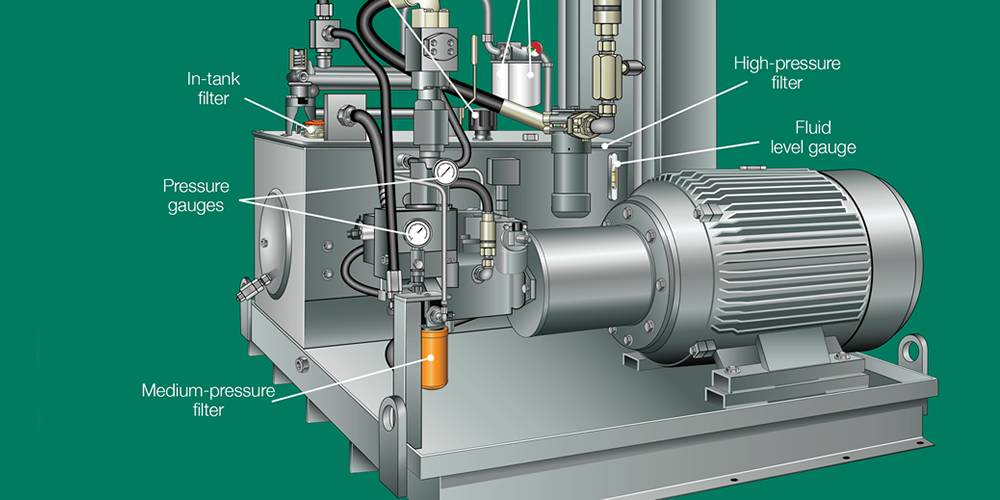Solution
We can choose a well-designed gas tightness oil tank equipped with high efficiency filters. Remove impurities from components and pipelines when installing the hydraulic system. Oils injected into the system go through strict filtering procedures. All these measures are designed to prevent pollutants from entering the system and causing oil contamination.
Therefore, choosing proper filters are crucial to the hydraulic system.

Filter installation diagram
As the main components of the hydraulic filtration system, suction line filter, in-line filter and return line filter work together to achieve perfect oil filtration. Here are some principles we need to follow in choosing these filters:
- Suction line filters are used to prevent large particulate pollutants and bubbles suspended in the oil from entering the system. Therefore, suction line filters shall be filters with low filtration accuracy and large oil flow capacity as filters with poor oil flow capacity are likely to cause cavities.
- In-line filters are generally installed in the upstream of important components and its filtration accuracy shall be higher than the tolerance clearance of the component friction pairs. In-line filters for the servo system shall not be equipped with bypass check valves and its filter element requires high pressure resistance.
- Return line filters require low pressure resistance. In systems with a thicker piston rod, the filter flow rate must be greater than the pump flow rate. It should be noted that the filter flow rate shall be greater than the product of the pump flow rate and the ratio of the front and rear chamber area of the cylinder piston when selecting the filter flow rate.
- Selection of filter flow: The flow of the selected filter shall be greater than the flow of the pump, generally 2–3 times greater than the flow of the pump. Properly increasing the flow of the filter will extend the service life of the filter.
- Selection of filtration accuracy: When selecting the filtration accuracy of the main filter, the filter shall be able to remove particles closer to hydraulic component vice dynamic film thickness. Because once the particles of this size enter the gap of the motion pair, it will cause the component surface wear and the gap increases, thereby allowing larger particles entering the gap, causing further wear and severe wear of "chain reaction", thus resulting in the quick failure of the component.
- The filter element must have excellent corrosion resistance and maintain good working efficiency at the specified temperature.
- The hydraulic oil filter element requires a regular replacement and maintenance.
These control measures are mainly targeted at solid particle contaminants. In addition, the damage of water contaminants and air contaminants to the hydraulic system cannot be neglected either. In short, we must attach great importance to the contaminant control in the entire process of the hydraulic system design, manufacturing, installation, use and maintenance.

